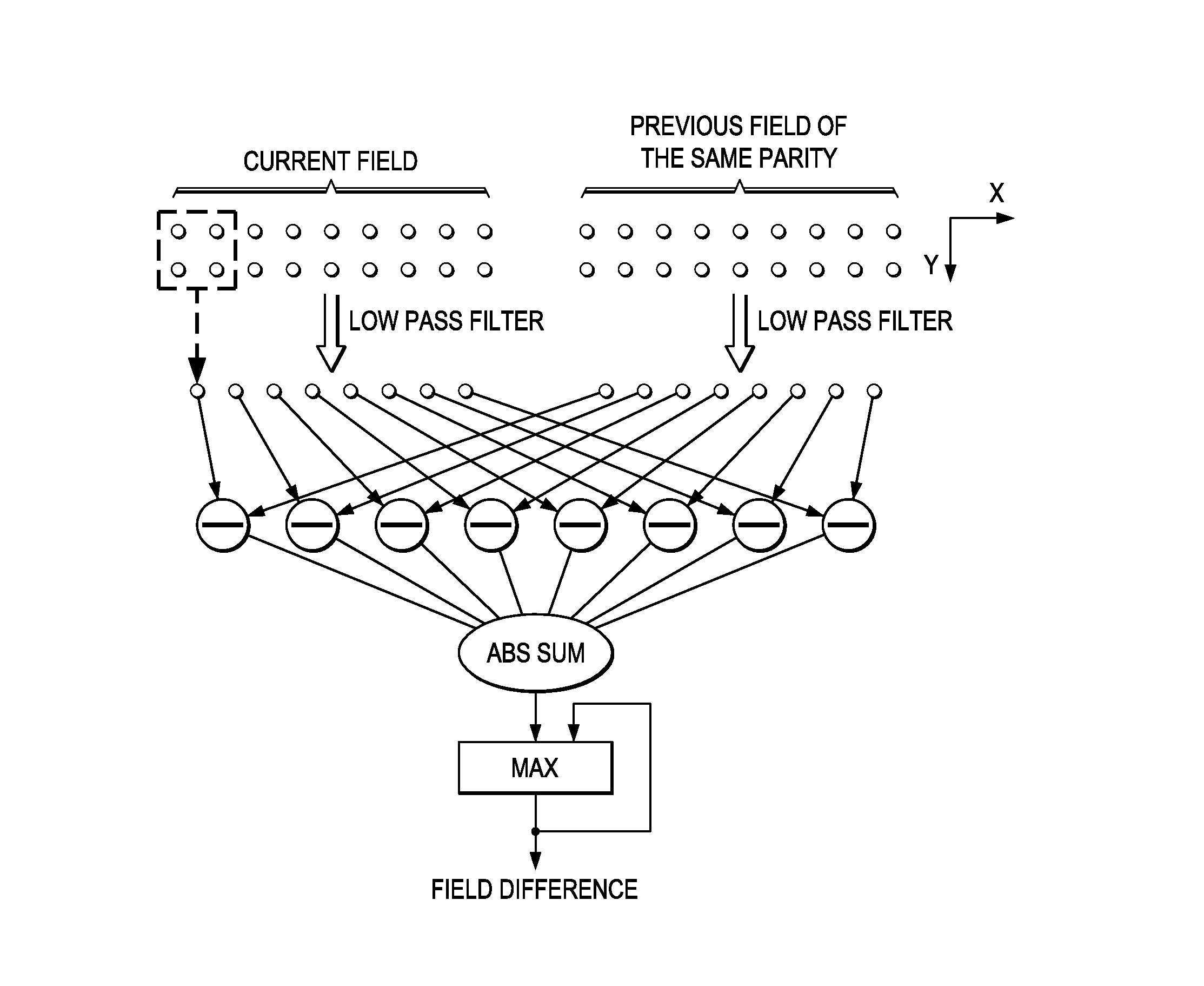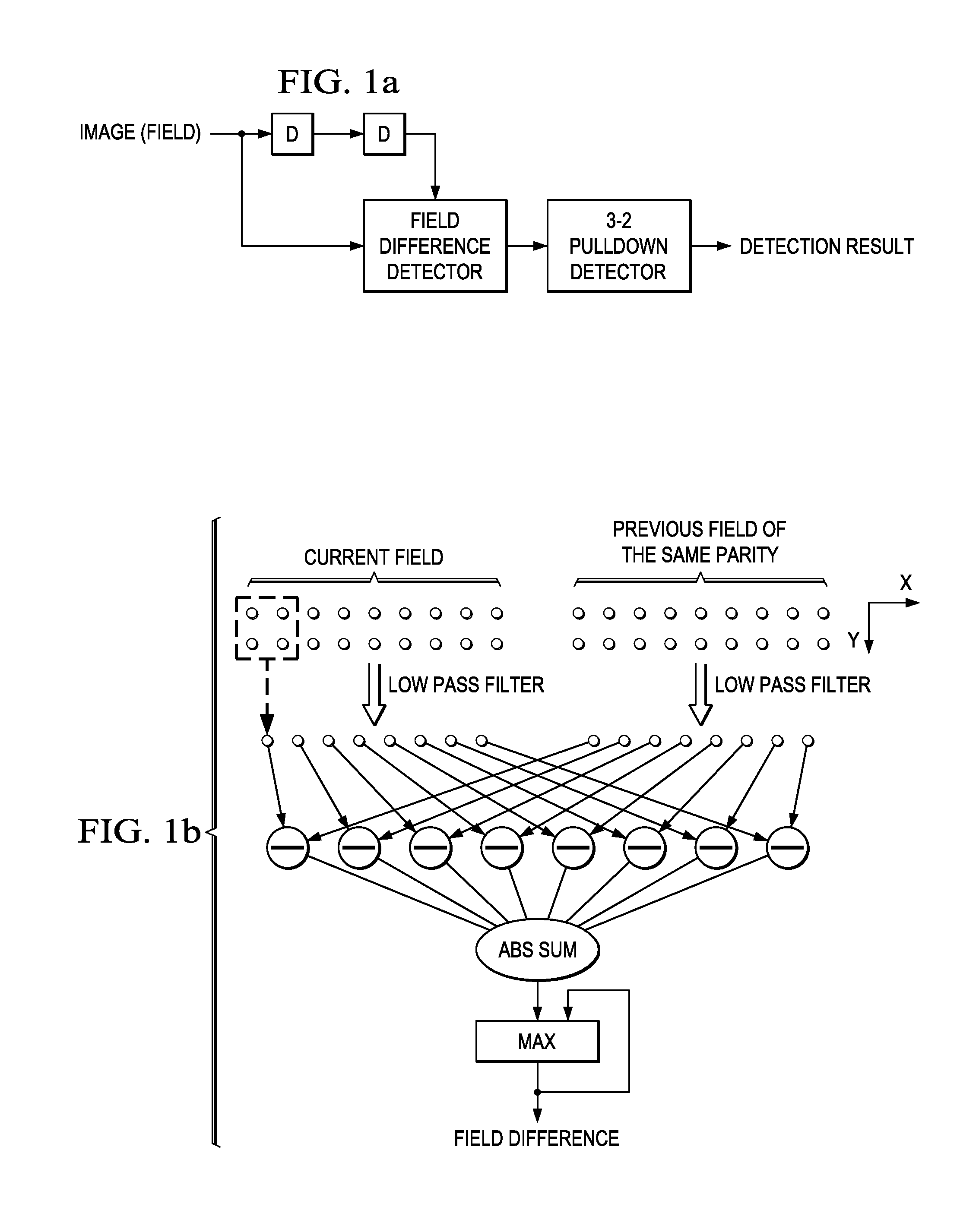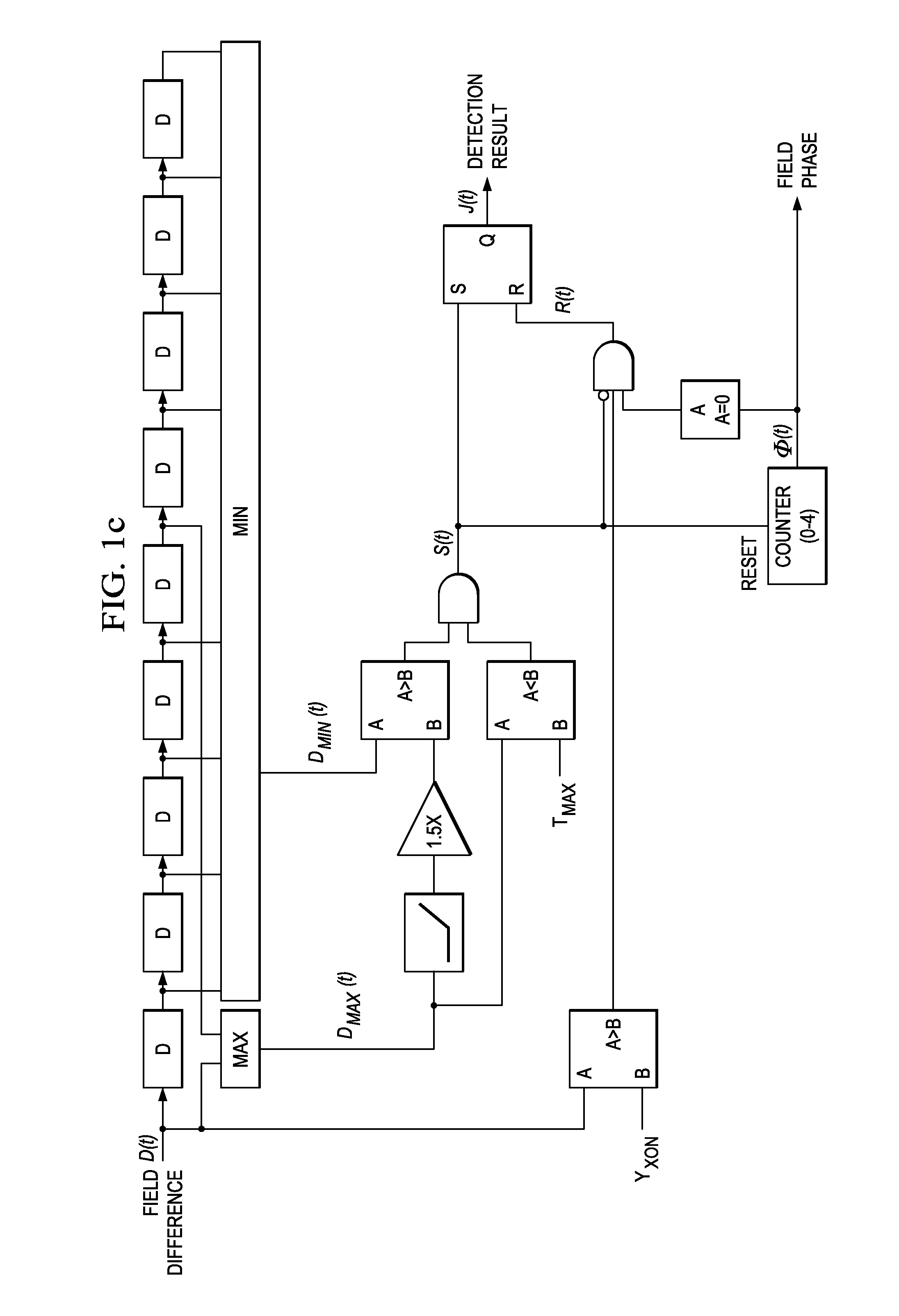Interlaced-to-progressive video
a technology of progressive image and interlaced image, which is applied in the direction of signal generators with optical-mechanical scanning, color signal processing circuits, television systems, etc., can solve the problems of difficult to detect especially fast motion and periodic motion in interlaced image sequences, noticeable noise at the center of up-converted progressive image, and difficulty in accurate detection of 3-2 patterns in actual environments
- Summary
- Abstract
- Description
- Claims
- Application Information
AI Technical Summary
Problems solved by technology
Method used
Image
Examples
Embodiment Construction
1. Overview
[0055]Preferred embodiment interlaced-to-progressive video processing methods include 3-2 pulldown detection, pre-filtering prior to field motion detection, field motion detection with feedback, field edge detection for moving pixel interpolation, and blending moving and still pixel interpolations considering field uniformity.
[0056]Preferred embodiment systems such as digital TV, DVD players, DVD recorders, cellphones, PDAs, notebook computers, etc., perform preferred embodiment methods with any of several types of hardware: digital signal processors (DSPs), general purpose programmable processors, application specific circuits, or systems on a chip (SoC) such as combinations of a DSP and a RISC processor together with various specialized programmable accelerators such as illustrated in the processor of FIG. 17a. A stored program in an onboard or external (flash EEP) ROM or FRAM could implement the signal processing. Analog-to-digital converters and digital-to-analog conv...
PUM
 Login to View More
Login to View More Abstract
Description
Claims
Application Information
 Login to View More
Login to View More - R&D
- Intellectual Property
- Life Sciences
- Materials
- Tech Scout
- Unparalleled Data Quality
- Higher Quality Content
- 60% Fewer Hallucinations
Browse by: Latest US Patents, China's latest patents, Technical Efficacy Thesaurus, Application Domain, Technology Topic, Popular Technical Reports.
© 2025 PatSnap. All rights reserved.Legal|Privacy policy|Modern Slavery Act Transparency Statement|Sitemap|About US| Contact US: help@patsnap.com



